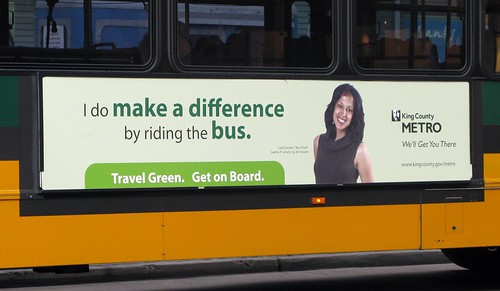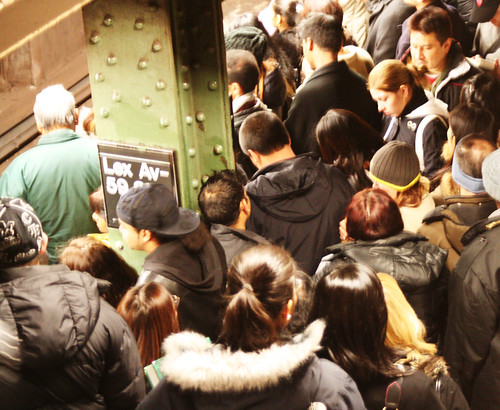Job Impacts of Spending on Public Transportation: An Update – APTA study says $1B public transportation spending creates 30,000 jobs
(Source: American Public Transportation Association via More Riders)
Many transportation industry minds are wondering what is the tangible benefits from all this investment in transit? After spending nearly one billion dollars through their public transportation agencies, what do the taxpayers stand to reap?
 According to a new report by the American Public Transportation Association, 30,000 jobs (besides better public transportation). That comes out to one new job for every $33,333 in spending. Not bad at all, as economic development projects go.
According to a new report by the American Public Transportation Association, 30,000 jobs (besides better public transportation). That comes out to one new job for every $33,333 in spending. Not bad at all, as economic development projects go.
The study report released on April 29th shows that investing in public transportation provides jobs to the American workers who may need them the most. Job Impacts of Spending on Public Transportation: an Update shows that two-thirds (67 percent) of the jobs created by capital investment in the public transit industry replaces lost blue-collar jobs with “green jobs” in the public transit sector. The Economic Development Research Group prepared the study for the American Public Transportation Association (APTA).
Overall, the study shows an investment of one billion dollars in public transportation supports and creates 30,000 jobs in a variety of sectors. Based on these projections, the American Recovery and Reinvestment Act of 2009 (ARRA), which provides $8.4 billion for public transportation projects, will create approximately 252,000 jobs for Americans and help transit systems meet the steadily growing demand for public transit services. APTA released the study at the U.S. House of Representatives Transportation and Infrastructure Committee hearing Recovery Act: 10-Week Progress Report for Transportation and Infrastructure Programs.
“The ultimate goal in any economic recovery plan should be to not create just any type of job, but rather to invest in and focus on areas particularly hit hard by the economic downturn,” said William W. Millar, APTA president. “The investment in public transit not only produces green jobs but also provides for a more sustainable transportation system that will help reduce our dependence on foreign oil and lessen the transportation sector’s impact on the environment.”
The study reveals that two out of three (67 percent) of these new construction and manufacturing “green jobs” resulting from public transit capital investment typically fall in the category of Blue-Collar Semi-Skilled (59 percent) and Blue-Collar Skilled (8 percent). These jobs include positions in manufacturing, service, repair worker, drivers, crew, ticket agents and construction.
In addition, 33 percent of the new jobs as a result of public transit investment fall in the White-Collar Skilled (32 percent) or White Collar Semi-Skilled (1 percent) category. These jobs include clerical, managerial and technical engineers.
Some of the key findings from this study are here:
-
The rate for federal funding of public transportation reflects a specific mix of capital investment and preventive maintenance funding as allowable by law. Under current federal law, an estimated 30,000 jobs are supported per billion dollars of spending.
-
The national rate can vary from of 24,000 to 41,000 jobs per billion dollars of spending, depending on the spending mix. The lower figure holds for spending on capital investments (vehicles and facilities), while the higher figure holds for spending on transit system operations. In reality, it is not logical to spend money on vehicles and not use them, nor is it logical to operate vehicles forever without any purchases of new equipment. For these reasons, the average rate is a more meaningful number.
-
Looking across the entire $47 billion spent on public transportation in the US each year, there is an average rate of approximately 36,000 jobs per billion dollars of public transportation spending (i.e., 36 jobs per million dollars of spending). This figure is based on the national mix of public transportation spending as of 2007. It includes a direct effect of spending in transportation related manufacturing, construction and operations as well as orders to suppliers or by re-spending of worker income on consumer purchases.
The rate of jobs supported per billion dollars of spending will continue to change every year, as prices change and technologies evolve.
Click here to read the entire report in HTML & to download a copy of the report in PDF format. For those who like to stay without leaving this window, here is a read-only copy of the PDF report.







